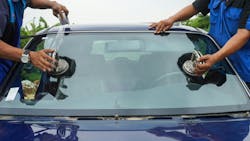Explaining the difference between OEM and aftermarket glass to your customers
Many customers who will come to your shop for windshield replacement will likely have plenty of questions about the glass you will use for the job.
As things stand, your customers have two primary choices for their replacement windshield: OEM auto glass and aftermarket auto glass, also referred to as OEE glass.
While some customers would know how an OEM windshield compares to OEE glass, many would probably have little to no idea what “OEM” or “OEE” even stands for, much less know the difference between the two.
When customers ask you to enlighten them about the difference between OEM and aftermarket glass, it is your duty as a professional to explain things to them as best you can. Here are tips on how to go about it.
Rattle off the facts
Your customers will need to know that the “OEM” in OEM auto glass is short for Original Equipment Manufacturer, while the “OEE” in OEE auto glass means Original Equipment Equivalent.
When explaining what OEM auto glass is to your customers, make sure you rattle off the following facts:
● Car manufacturers actively seek out companies that can provide auto glass for their vehicles and give them the license to fabricate glass to their exact specifications.
● Auto glass companies that obtain that license get the designation as an Original Equipment Manufacturer or OEM and their products are referred to as OEM auto glass.
● An OEM windshield is the closest thing to their original windshield that they can get as far as thickness, color, shape, and fit are concerned.
● OEM auto glass will likely be stamped with the carmaker’s brand name and logo.
As for aftermarket or OEE auto glass, you need to tell your customers that:
● Aftermarket or OEE glass manufacturers are not licensed by car companies to fabricate windshields for their car models.
● OEE glass products don’t bear the brand or logo of the car company for which they’re being made.
● OEE glass manufacturers are legally prohibited from producing exact replicas of OEM glass, which is why the thickness, color, shape, and fit of aftermarket glass end up being very different.
Compare OEM vs. OEE
To make the differences between OEM and aftermarket glass even more apparent to your customers, you need to compare them based on the following aspects:
● Quality: Make it clear to your customers that the quality of OEM glass is virtually identical to that of their original windshield, as their fabrication follows the standards car manufacturers have set for their product. Aftermarket auto glass products, on the other hand, may not adhere to the same standards, but they meet or exceed the Department of Transportation’s minimum safety requirements.
● Price: OEM glass is naturally more expensive than aftermarket auto glass, for the simple fact that it has the stamp of approval of their car’s manufacturer. However, if they want to go for something more affordable, then recommend OEE glass to them, as their price tag is significantly lower than that of OEM glass.
● Availability: Aftermarket auto glass makers outnumber OEM glass manufacturers. With more OEE glass makers, it follows that there would be more aftermarket auto glass in the market for more vehicle makes and models. If your customer has an old car, he or she has to know that finding an OEM windshield for it would be difficult due to limited stocks.
● Insurance coverage: If your customers want full coverage for windshield replacement, inform them that they may have to go for an aftermarket windshield. That’s because most standard car insurance policies won’t likely cover the full cost of an OEM windshield. However, if they insist on an OEM windshield despite the partial coverage, then let them proceed with their choice, by all means.
Without a doubt, your customers will take the information you provide them about OEM and OEE auto glass to heart. They will very much appreciate your candor about the pros and cons of both types of auto glass, as it allows them to make an educated decision.
Whatever their choice, you will have earned their trust, and they will be more likely to become loyal customers who will look to you for their auto glass needs.
About the Author
Adrian Bell
Content Marketing Strategist, Reliable Glass
Adrian Bell is the Content Marketing Strategist for Reliable Glass, a local, family-owned and operated business that serves the Valley of the Sun with auto, home, and commercial glass repair since 2001. In his spare time, he draws and plays a game of hoops with his friends.
